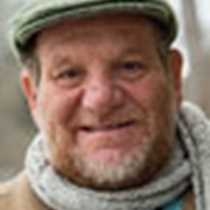The first part of any expedition to Antarctica is, of course, the infamous Drake Passage. Long known for some of the worst seas in the world, many guests wonder what it will be like when we cross it. All and all, our crossing was fairly average. There is a bright side to a windy crossing, and that is birds. This is the Southern Ocean, home to the masters of long distant flight, the albatross. By the end of breakfast, we had spotted four species. Mostly, we observed light-mantled albatrosses. One species rather rare to this area, the Atlantic yellow-nosed albatross, was also spotted. This was a very special bird for a very special first day.
2/28/2025
Read
National Geographic Resolution
Northbound Drake Passage, Cape Horn, and the Beagle Channel
This morning, we had a later start than usual after a late night enjoying the crew show. Our galley team gifted us with a fulfilling brunch. We then had a brilliant forum about climate change with the participation of our panel of experts onboard. Afterward, our expedition leader called us to the bow to see Cape Horn, which was only a few miles ahead. The good weather allowed us to have a smooth and fast crossing, allowing extra time to swing by Cape Horn, the most southern tip of the Americas. Over the PA system, Steven provided a very interesting description of the historical importance of this area, then Pablo read a beautiful poem, a memorial to the seaman lost at sea. We could see the monument in the distance, two metal sheets that depict an albatross in flight. During the afternoon, we enjoyed Madalena’s presentation about Women in Antarctica. This was an incredible voyage through the struggles and delays of allowing women to participate in science and logistics in Antarctica. We entered the Beagle Channel around 17:00 and we encountered black-browed albatrosses, cormorants, dolphins, and whales. On our final approach to the beautiful city of Ushuaia, we passed by Les Eclaireurs Lighthouse and some of the seals that live in the Bridges Islands Archipelago.







